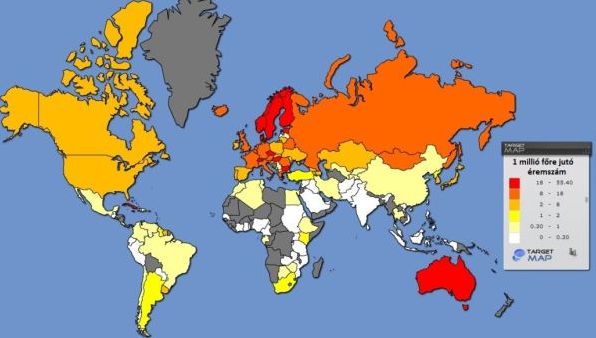Inequalities of qualities and quantities
Local inequalities convey both quality and quantity dimensions. The quantity dimension (2) includes size, mass, expansion and from the viewpoint of dynamics it covers growth as well as decrease/reduction (J. Nemes Nagy, 1998). The spatial elements of sport culture are represented in different “objects” having various size and quantity (figure 2).

Figure 2. The attendance ratio of the American National Basketball Associations (NBA) between 2009-2011.
If, for example, the locations of the countries whose athletes were awarded with medals at the summer Olympic Games as well as the number of their medals are taken into consideration the definition of regional disproportions and inequalities might be more precise. The, for example, number of medals and the number of the population can bring about relative indicators (figure 3).

Figure 3. At the summer Olympic Games the number of medals per 1 million inhabitants.
Quality dimension (3) always conveys social values. But often the quality and quantity criteria cannot be separated from each other quite clearly. In sports the notion of qualification is closely tied to the quantitative performances (first class qualification). The dynamics of quality changes is described with the notions of development, unchangingness, set-backs and fallbacks.